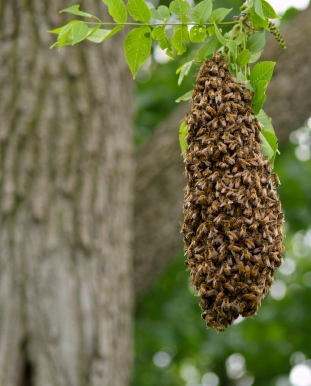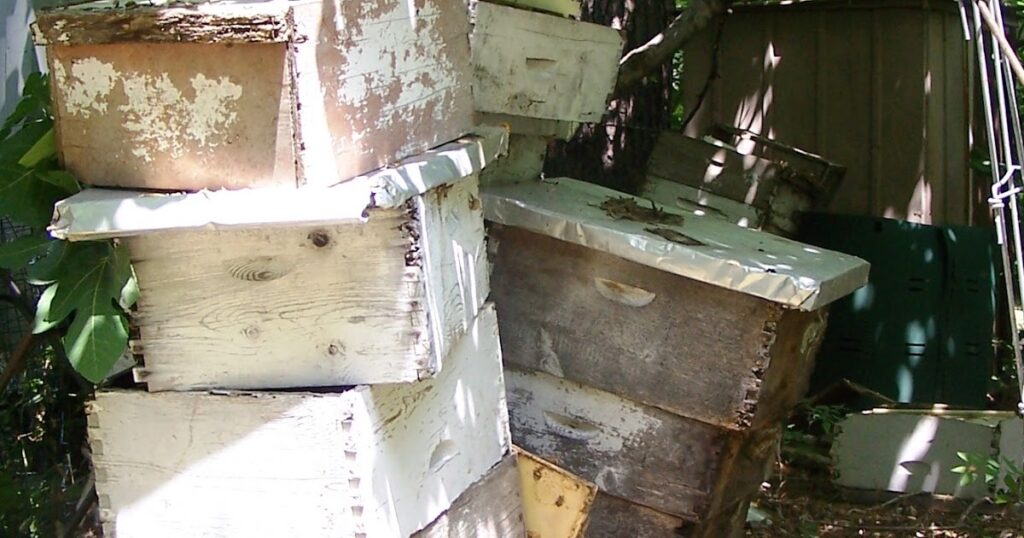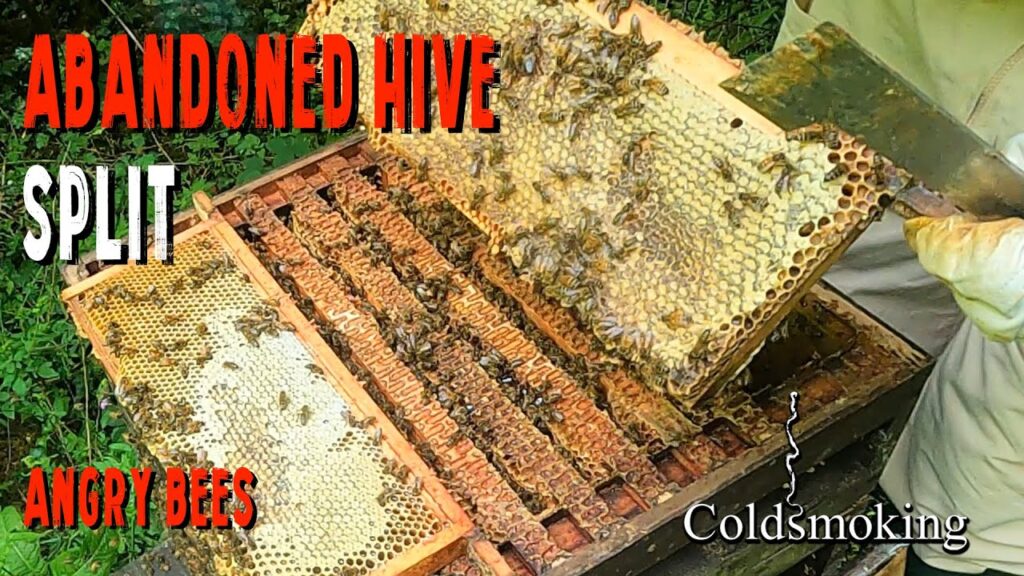
Have you ever come across a beehive and wondered if it was abandoned or still buzzing with activity? It can be difficult to determine the status of a beehive at first glance, but fear not! In this article, we will explore some telltale signs that can help you decipher whether a beehive is indeed abandoned or thriving with bees. From the absence of buzzing sounds to an empty entrance, these indicators will equip you with the knowledge needed to identify the buzzing fate of a beehive. Whether you’re a curious nature enthusiast or someone seeking to relocate a hive, read on to unravel the mystery of an abandoned beehive!
Physical Signs of Abandonment
Lack of Bee Activity
One of the most obvious signs that a beehive has been abandoned is the lack of bee activity. If you observe the hive over a period of time and notice that there are no bees coming in or out, it is a strong indication that the hive has been deserted. Bees are usually very active, constantly flying in and out of the hive to gather nectar and pollen. Without their presence, it is safe to assume that the hive has been abandoned.
No Hive Maintenance
Another physical sign of abandonment is the lack of hive maintenance. Bees are meticulous in their care for their hive. They constantly clean and repair their home, ensuring that it remains in good condition. However, when a hive is abandoned, this maintenance ceases. You may notice a build-up of debris, such as dead bees or fallen leaves, around the hive. This neglect is a clear indication that the hive has been left behind.
Presence of Beeswax and Honeycomb
While the absence of bees themselves may suggest abandonment, the presence of beeswax and honeycomb can also be telling. Bees create these structures in order to store their honey and rear their young. If you notice beeswax and honeycomb inside the hive, it indicates that bees were once present in the hive. However, if these structures are empty and appear old or disheveled, it suggests that the bees have abandoned their home.
Empty Honeycomb Cells
A final physical sign to look out for is the presence of empty honeycomb cells. Bees use these cells to store honey, pollen, and to house their larvae. When a hive is abandoned, these cells are often left deserted. Take a closer look inside the hive and observe the honeycomb cells. If they are completely empty, it is a clear indication that the bees have vacated the premises. This empty honeycomb is a sign of neglect and abandonment.
Evidence of Neglect
Overgrown Vegetation Around Hive
Neglected beehives often show evidence of overgrown vegetation surrounding the hive. The lack of maintenance and foraging activity cause plants and weeds to flourish in the immediate vicinity. Bees play a crucial role in pollination, and their absence leads to a decline in the overall health of the area surrounding the hive. This overgrowth can serve as a visible sign that the hive has been abandoned.
Lack of Fresh Pollen or Nectar
When bees are actively living in a hive, they constantly bring in fresh pollen and nectar to sustain their colony. However, in abandoned hives, you will notice a lack of fresh pollen and nectar. Pollen is an essential protein source for the bees, and its absence suggests that the bees are no longer present. Additionally, the lack of fresh nectar indicates a halt in the production of honey, further supporting the theory of abandonment.
Decaying or Damaged Hive Components
Neglected hives often exhibit signs of decay and damage. Without the bees’ diligent maintenance and repair work, the hive components begin to deteriorate. The wooden frames may show signs of rot, the hive boxes might become warped or cracked, and the roofing materials might deteriorate with time. These physical changes in the hive components act as visible markers of neglect and abandonment.

Inactivity at the Hive Entrance
Observing the Entrance
To determine if a beehive is abandoned, it is essential to observe the hive entrance closely. Active hives will have bees constantly entering and exiting, while abandoned hives show a distinct lack of activity. Take some time to sit near the hive entrance and observe. If there are no bees flying in and out, it indicates that the hive has been abandoned.
Lack of Foraging Activity
Bees are diligent foragers, constantly searching for nectar and pollen to sustain their colony. One clear indication of an abandoned hive is the absence of foraging activity. Bees will typically have a steady stream of bees coming and going from the hive, but when a hive is abandoned, this activity ceases. The lack of bees actively searching for food is a strong indication that the hive has been deserted.
Lack of Buzzing Sounds
Silence Around the Hive
A thriving beehive is often filled with buzzing sounds as the bees go about their daily tasks. However, in an abandoned hive, this symphony of buzzing will be absent. Approach the hive and listen closely. If there is complete silence, it suggests that the hive has been deserted. The disappearance of buzzing sounds is a clear indication that the bees are no longer present.
No Audible Vibrations
In addition to the absence of buzzing sounds, an abandoned hive will lack the audible vibrations felt when bees are actively present. Bees create vibrations through their movements, and the presence of these vibrations is a strong indicator of an active hive. However, when a hive is abandoned, these vibrations cease. By placing your hand gently on the hive, you can feel for these vibrations. If there are no noticeable vibrations, it is another sign of abandonment.

Absence of Bee Traffic
Minimal or No Incoming or Outgoing Bees
When bees are actively living in a hive, there is a constant flow of bees coming in and out. However, in an abandoned hive, you will observe minimal or no incoming or outgoing bees. Take some time to watch the hive entrance and see if there are any bees entering or leaving. If there are very few or no bees at all, it suggests that the hive has been abandoned.
No Orientation Flights
Young bees undergo orientation flights where they familiarize themselves with the area around the hive. These flights serve as a necessary part of their development. However, in an abandoned hive, you will not observe any orientation flights. These flights typically involve numerous bees swirling around the hive, but in an abandoned hive, there will be an absence of this activity. The absence of orientation flights indicates that the hive has been deserted.
Absence of Defensive Behavior
Lack of Guard Bees
Bees are highly protective of their hive and exhibit defensive behavior when it is threatened. One sign of an abandoned hive is the absence of guard bees. Guard bees typically position themselves near the entrance of the hive, defending it from potential intruders. However, in an abandoned hive, you will not observe any bees in this defensive position. The absence of guard bees suggests that the hive has been deserted.
No Aggressive Reaction to Disturbance
When bees are living in an active hive, they will display aggressive behavior if the hive is disturbed or threatened. This aggression serves as a defense mechanism to protect their colony. However, in an abandoned hive, you will notice a lack of aggressive reactions to disturbance. If you approach the hive and see that the bees do not respond aggressively, it suggests that the hive has been abandoned.

Hive Odor and Smell
Absence of Sweet Fragrance
A healthy, active beehive typically emits a sweet, floral fragrance due to the presence of honey and nectar. However, in an abandoned hive, this sweet fragrance will not be present. Approach the hive and take a moment to inhale. If there is no distinct sweet smell, it signifies that the hive has been deserted. The absence of this fragrance is a clear indication of abandonment.
Presence of Musty or Rotten Odor
Conversely, an abandoned hive may emit a musty or rotten odor. Without the bees’ regular cleaning activities, the hive can become infested with mold, mildew, or pests, leading to a foul smell. If you detect a strong, unpleasant smell emanating from the hive, it suggests neglect and abandonment.
Lack of Queen and Brood
Missing Queen Bee
The absence of a queen bee is a strong indicator of an abandoned hive. The queen is the heart of the colony, responsible for laying eggs and maintaining the hive’s population. Without her presence, the other bees cannot continue their life cycle. If you do not observe a queen bee in the hive, it suggests that the hive has been deserted.
No Eggs, Larvae, or Capped Brood
Alongside the missing queen, the absence of eggs, larvae, or capped brood also indicates a deserted hive. These are stages in the bees’ life cycle and are crucial for the survival and growth of the colony. A lack of these stages suggests that there are no active bees present, confirming the abandonment of the hive.

No Honey Production
No New Honeycomb Construction
Bees constantly construct new honeycomb to store their honey and rear their brood. However, in an abandoned hive, there will be no new honeycomb construction. The bees have halted their honey production and brood rearing activities, leading to a lack of new comb. If you observe that there are no signs of fresh honeycomb construction in the hive, it is a strong indication of abandonment.
No Stored Honey or Pollen
An abandoned hive will also lack stored honey or pollen. Bees collect and store honey and pollen as essential food sources for the colony. However, when a hive is deserted, the bees will not continue to produce or store these resources. Take a look inside the hive and check for the presence of stored honey or pollen. If there is a complete absence of these provisions, it confirms that the bees have abandoned their home.
Neighboring Beehive Activity
Observing Nearby Hives
To confirm whether a beehive is abandoned, you can also observe the activity of neighboring hives. Bees are highly social creatures and rely on the presence of other colonies for various interactions, such as mating and foraging. If you notice that there is little to no corresponding activity in neighboring hives, it suggests that the area may have experienced a loss of bee populations. This lack of activity further strengthens the assumption of hive abandonment.
Little or No Corresponding Activity
In addition to observing neighboring hives, you can also look for signs of little to no corresponding activity in the surrounding area. Bees are important pollinators and their absence can have a significant impact on local plant and flower populations. If you notice a decline in pollination activity or a lack of bees visiting flowers and plants in the vicinity of the hive, it further supports the conclusion that the hive has been abandoned.
In conclusion, there are several physical signs and evidence of neglect that can help determine if a beehive is abandoned. These signs include the lack of bee activity, neglect in hive maintenance, the presence of beeswax and empty honeycomb cells, overgrown vegetation around the hive, the absence of fresh pollen or nectar, and decaying or damaged hive components. Additionally, signs such as inactivity at the hive entrance, the lack of buzzing sounds and bee traffic, the absence of defensive behavior, hive odor and smell, the lack of a queen and brood, no honey production, and neighboring beehive activity can also indicate abandonment. By carefully observing these signs, you can determine if a beehive has been abandoned.